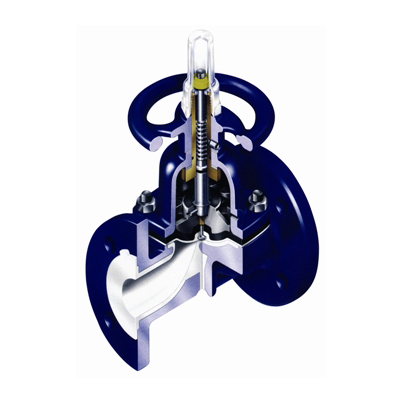Diaphragm valveLocation:Home > Diaphragm valve

Barrier diaphragm valve
Weir diaphragm valves are used in acid, chlorine manufacturing, etchant, chemical, flue gas desulfurization, rubber manufacturing and other fields
Design features
Multiple material availability: (various body and diaphragm materials)
Slurry application: with streamlined flow and no lumen (the chamber inside the valve can easily capture solid particles, or increase the operating torque of the valve part, or as well
It is an ideal valve for slurry.
High purity application: minimize particle production and product retention.
Corrosive application: plastic lining and PTFE diaphragm have wide selection, spraying corrosion resistance
The coating provides an excellent barrier against chemical erosion and
Corrosion.
Closed: Hanover weir diaphragm valves can be in 0.1 micron to 300psi
The pipeline is closed and closed
Hood separation: the working part is separated from the process fluid.
Secondary seal: if the diaphragm fails, the optional sealing valve cap will be used for secondary sealing
To prevent the process medium from entering the atmosphere.
Vacuum application: it can be closed without air permeability. The minimum can reach 0.1 micron.
Product range
Size: DN15 ~ 350 (1/4 "to 14")
Stress level: 150LB
The highest working temperature: 150 ℃
Main material: cast iron, cast iron lining, aluminum, copper, stainless steel
Ductile iron lining PP, PTFE, PFA
Diaphragm: EPDM, PTFE, NBR, FPM, CSM, etc